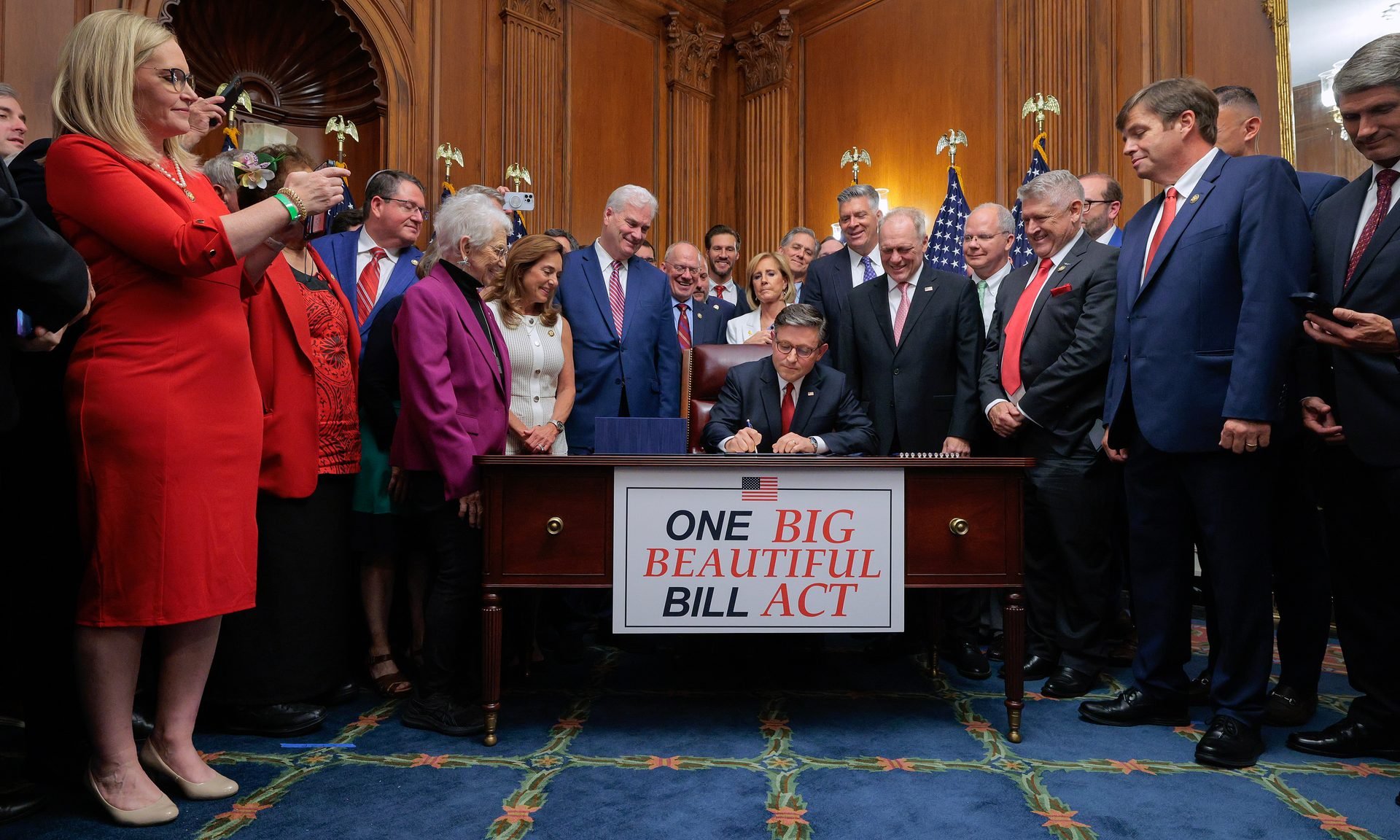When Do ‘Big, Beautiful’ Megabill Changes Go Into Effect?
The GOP megabill staggers the rollout of its sweeping budget provisions, including tax breaks and social program cuts.

Many, or all, of the products featured on this page are from our advertising partners who compensate us when you take certain actions on our website or click to take an action on their website. However, this does not influence our evaluations. Our opinions are our own. Here is a list of our partners and here's how we make money.
The GOP-led Congress is walking a political tightrope with the rollout of key provisions in Trump’s “one big, beautiful” bill, passed last week.
With next year’s midterms looming, strategic timing is everything: tax breaks to households (and corporations) begin in 2025, while most sweeping social program cuts are delayed until 2028. Learn more about what’s in the budget here.
Here’s a rundown of when the budget provisions that could most affect your household will begin:
Tax cuts and incentives
- Extension of the 2017 marginal tax rates: Trump’s 2017 tax cuts for individuals and corporations were set to expire at the end of the year, but have now been made permanent, effective immediately.
- State and Local Tax (SALT) cap increases: The SALT cap rises to $40,000, beginning in the 2025 filing year, but will revert back to $10,000 in 2028. The SALT deduction is only available to taxpayers who itemize.
- Increased standard deduction: The current standard deduction — which was doubled by Trump’s tax cuts in 2017 — is made permanent. Starting in 2025, single filers can deduct an additional $750, while married couples can deduct $1,500. The additional deduction amounts will adjust to inflation beginning in 2026. The increases phase out for those with higher incomes.
- Standard deduction increase for seniors: Starting in 2025 and expiring after 2028, those 65 and older who earn less than $75,000 annually can deduct an extra $6,000 ($12,000 for married couples) on top of the standard deduction.
Meet MoneyNerd, your weekly news decoder
So much news. So little time. NerdWallet's new weekly newsletter makes sense of the headlines that affect your wallet.
- Child tax credit: Increases — and makes permanent — the child tax credit to $2,200 for the 2025 tax year. The credit amount adjusts for inflation moving forward.
- No taxes on tips: Tipped income under $25,000 per year will be tax-deductible starting with the 2025 filing year. The provision expires after 2028.
- No tax on overtime: Overtime pay can be deducted — up to $12,500 for individual filers or $25,000 for married couples filing jointly — beginning with the 2025 tax year. The provision phases out for those with income above $150,000 or $300,000 for couples. It ends in 2028.
- Auto loan interest exemption for new vehicles: Allows a deduction of up to $10,000 in interest on loans for new car purchases. Begins 2025 and sunsets in 2028.
- Home energy tax credits: End after Dec. 31, 2025.
- Electric vehicle tax credits: End Sept. 30, 2025.
- “Trump Accounts”: Babies born between Jan. 1, 2025 and Dec. 31, 2028 will be automatically enrolled in a “Trump Account” with a one-time $1,000 federal contribution.
- Section 179 deduction: Small businesses can write off 100% of equipment and certain commercial property costs in the first year, effective Jan. 19, 2025. It also raises the deduction cap on property expenses to $2.5 million, beginning Dec. 31, 2024.
- 1099-K reporting threshold restoration: Reverts the threshold for online sales reporting to $20,000 or 200 transactions per year, as it was before 2021. The provision is applied retroactively to 2022.
- Medicaid work requirements: Recipients must verify 80 hours per month of work, school, work training or volunteering. States must implement the new requirements by Dec. 31, 2026.
- Supplemental Nutrition Assistance Program (SNAP) work requirements: Expands work requirements to able-bodied recipients, ages 18 to 64 (up from 54). The requirements include those with children older than 6. Timing isn’t clear, but changes may begin sometime this year.
- Medicaid cuts: Medicaid funding reductions begin in 2028. The Congressional Budget Office projects nearly $1 trillion in cuts over a 10-year period; it could leave some 11.8 million people losing health care coverage.
- SNAP cuts: Up to $230 million in SNAP food assistance cuts over 10 years, beginning in 2028.
- Affordable Care Act (ACA) rule changes: Tighter ACA enrollment rules roll out between 2025 to 2028, depending on the specific provision.
Consumer protection cuts
- Funding cuts for the Consumer Financial Protection Bureau (CFPB): Funding for the CFPB is cut in half, effective immediately. The CFPB oversees the consumer finance industry.
- Current federal student loan borrower repayment plans: Existing income-driven federal student loan repayment plans will sunset by July 1, 2028. This includes forgiveness under these repayment plans.
- New repayment plan for student loan borrowers begins: Enrollment in a new Repayment Assistance Program begins July 1, 2026. It is an income-driven plan that requires a $10 minimum monthly payment for borrowers and extends the timeline for forgiveness to 30 years.
- Graduate PLUS loan program: Funding for Graduate PLUS loans program sunsets as of July 1, 2026. Lifetime borrowing for graduate studies is also capped.
- Parent PLUS loan program: Implements a $65,000 cap on Parent Plus loans as of July 1, 2026.
(Photo by Chip Somodevilla/Getty Images News via Getty Images)
Meet MoneyNerd, your weekly news decoder
So much news. So little time. NerdWallet's new weekly newsletter makes sense of the headlines that affect your wallet.
Article sources
NerdWallet writers are subject matter authorities who use primary,
trustworthy sources to inform their work, including peer-reviewed
studies, government websites, academic research and interviews with
industry experts. All content is fact-checked for accuracy, timeliness
and relevance. You can learn more about NerdWallet's high
standards for journalism by reading our
editorial guidelines.
Related articles














Social program cuts